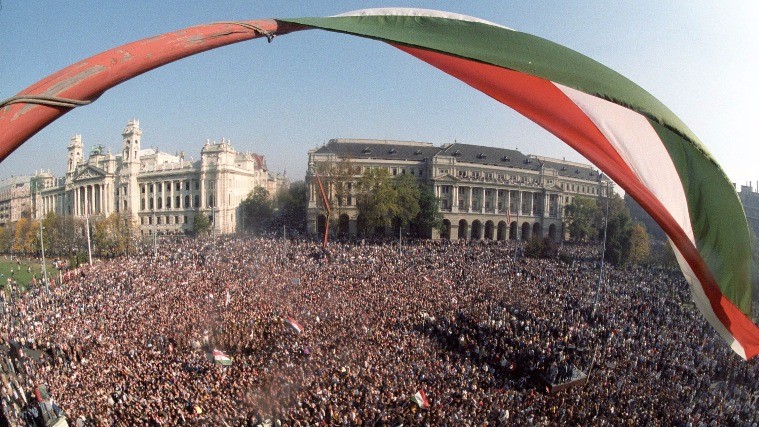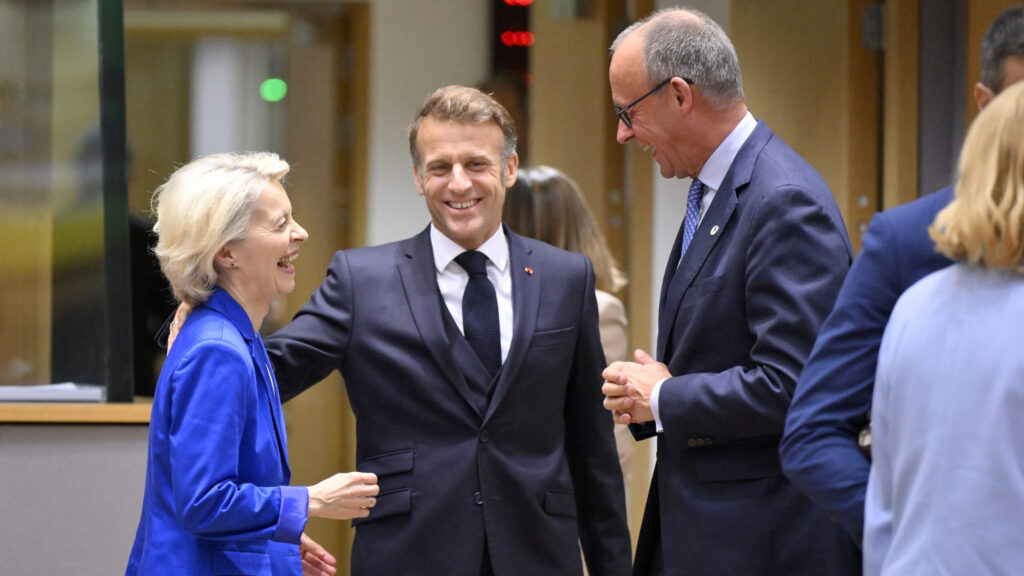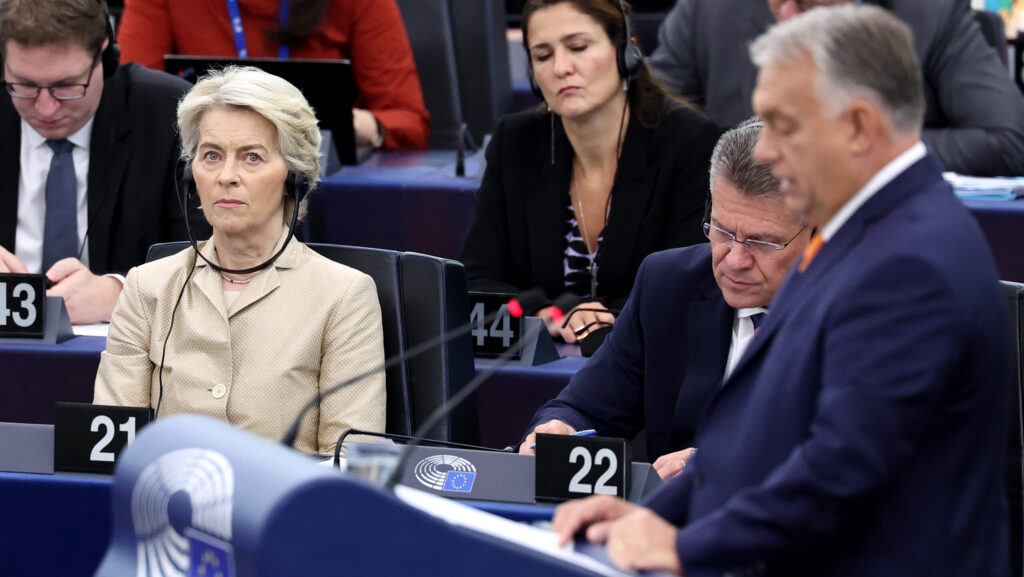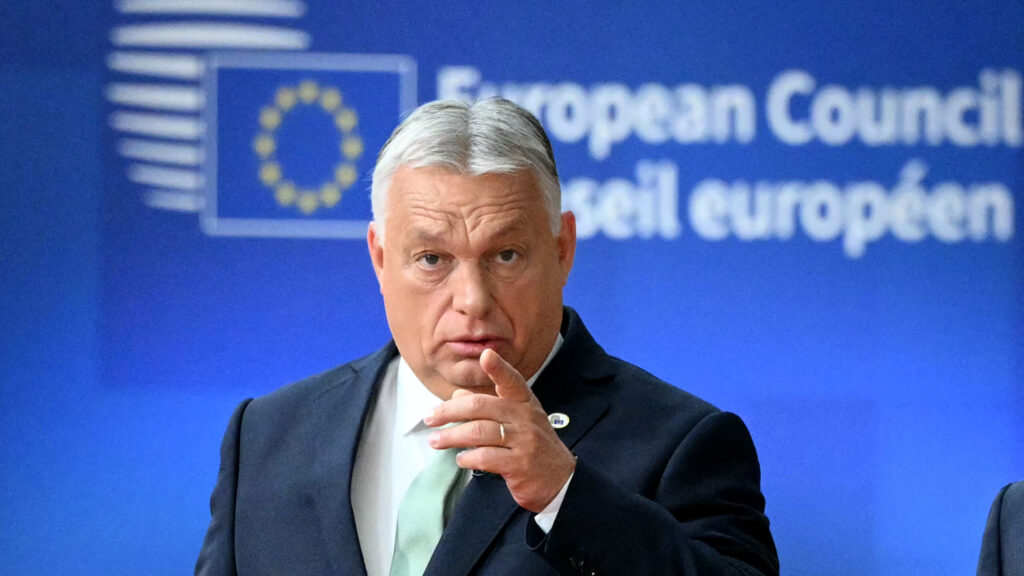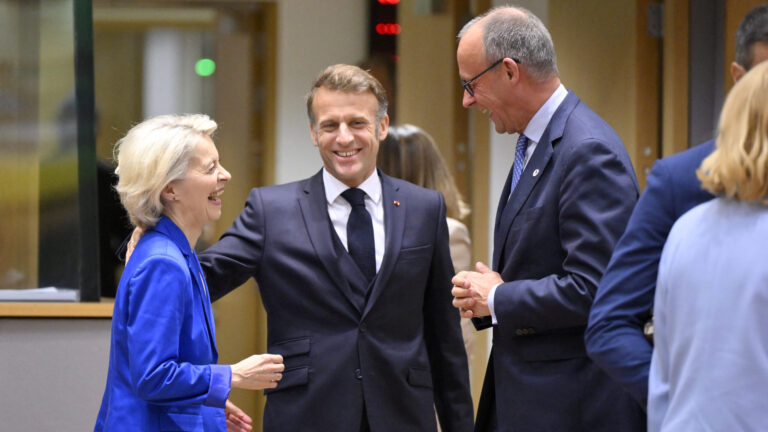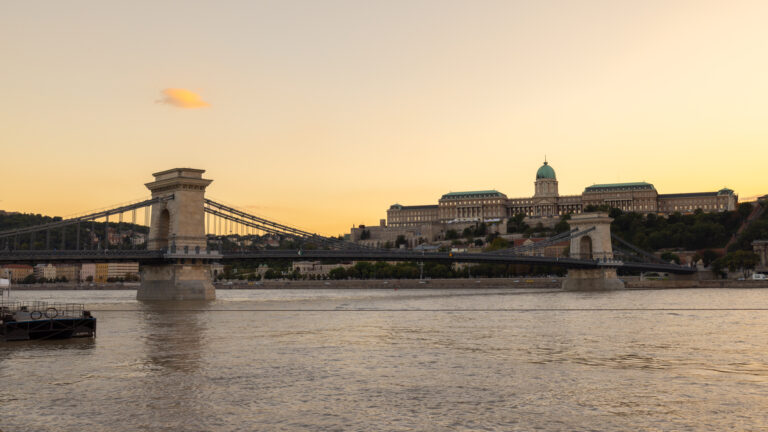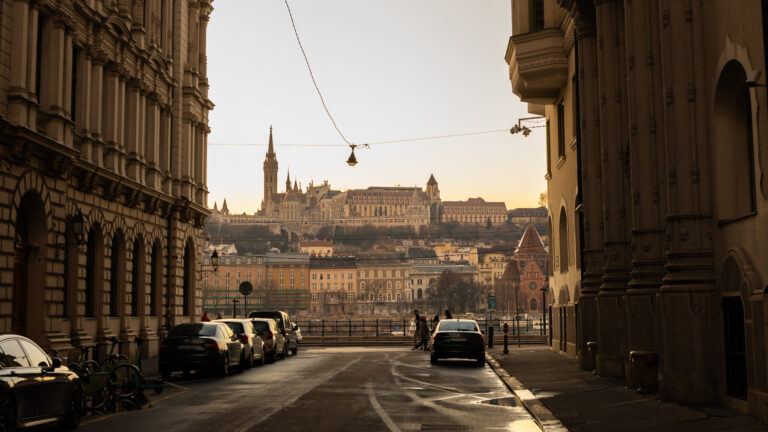23 October 2024 marked the 68th anniversary of the start of the heroic Revolution of 1956 and, at the same time, the 35th anniversary of the proclamation of the Hungarian Republic in 1989. With this, Hungary opened a new, much freer chapter in its history, which we can all cherish.
Mátyás Szűrös, the Speaker of the Hungarian National Assembly at the time, who had been appointed to the role by the Socialist single-party state, was standing on a balcony of the Parliament building as he announced the birth of the Hungarian Republic to the excited crowd after around forty years of Communism and Soviet rule, on 23 October 1989. This event was the symbolic beginning of a new era: the transitioning from Soviet modernity—a collectivist, state-led, authoritarian, Marxist-Leninist regime—to a Western-style, democratic system.
23 October 1989, the day of the proclamation, is not a date of outsized influence in Hungarian national memory. And this is understandably so, as the announcement of the third Hungarian republic, is vastly outshined by the anniversary of the 1956 revolution. The proclamation was clearly not accidentally timed to coincide with this important date. As opposed to the outbreak of the revolution and freedom fight, the birth of the democratic republic lacked ‘historical drama’. The proclamation by Mátyás Szűrös was not the result of a heroic struggle, but rather the acknowledgement that the Communist regime could no longer resist the mounting interior and exterior pressures, including the evaporation of the Soviet might in the confusion of the late 1980s. It was not the start, but the end of a long process that intensified in the 1980s.
The Path to the System Change
Ordinary Hungarians tend to feel that the transition happened over their heads, settled by elite political forces in ‘smoky backrooms’. The technocratic elites and the democratic opposition smoothly negotiated the exit of Marx’s spirit from Hungary. In 1989, the negotiations progressed between MSZMP (the Hungarian Socialist Workers’ Party), the so-called Opposition Roundtable, an informal alliance of various anti-Communist forces, and civic organizations, ending with the agreement on the transition from a People’s Republic to a Republic signed on 18 September 1989, approved by the Legislative Assembly a month later, on 17 October. 23 October was therefore definitely not a victorious end, with the ‘four yeses’ referendum deciding on the basic features of the new democratic system coming only in November 1989. The first democratic elections were held only in March–April 1990, and the exit from the COMECON and the Warsaw Pact was finalized in 1991.
This meant that NATO was no longer a hostile alliance and also marked the end of the subjugating of the national interest to ‘socialist internationalism,’ measuring every move against the greater goal of global competition, with the interim goals set and enforced by Moscow.
Not only did this liberation from the Cold War mark the end of communist rule, but also the definitive end of a series of crises and tragedies that Hungary went through in the 20th century. With the fall of the old empires of Europe after World War I, Central and Eastern Europe was transformed into part of what Timothy Snyder called ‘the Bloodlands’, a term applied by the renowned historian originally to Poland, the Baltics, and Belarus-Ukraine. These countries were characterized by constantly moving borders, interethnic clashes, and the permanent threat of imperial conquest. As the local conflicts involving Hungary (although not the tensions) ended, and the sun was rising on a Europe that set itself the goal of achieving stability, peace, and cooperation, the new Hungary was finally free from the cascade of overlapping national and imperial clashes that had ravaged it periodically since 1914 in one way or another.
The great modernization experiment that befell Eastern Europe was directed by state agents after 1945, resulting in the birth of industrial agriculture, cultural imports, as well as the earliest iterations of air travel and television. While what happened was indeed modernization, it produced ineffective and politically defined frameworks, which limited innovation and the flow of capital toward effective companies and ultimately made the economy financially unviable. While the start of borrowing from the International Monetary Fund in 1982 was seen as a grave mistake of Hungarian Communist leader János Kádár and his financial advisers, it needs to be recognized that state socialism by itself had led the country to an economic dead end, with the 1973 oil crisis marking the beginning of the end of the system. It was in a desperate situation, with the relatively high standard of living no longer sustainable in the country, that the Western financial institutions offered a lifeline. It was a crucial life buoy until Socialism exited the scene, but it came at a very high price. After the system change, social spending was radically cut back, whole industries were closed, practically wiping out the relative safety that most Hungarians enjoyed under the state socialist system. Goulash communism came to an abrupt end, with the prosperity that people hoped would arrive hand in hand with democracy nowhere in sight.
The Forces Behind the Fall of Communism
The fall of the Soviet Union would have, however, most likely happened much later had it not been for the steadfast pressure of the West, an effort led by the great conservative leaders Ronald Reagan and Margaret Thatcher. While also working towards preventing a third world war, which led to the ‘thawing’ that ended the Cold War, rather than appeasing the Soviets, the West chose to exert relentless economic and military pressure which forced the Eastern Bloc into abandoning its authoritarian socialist project.
So, on the one hand, there were slow but steady processes happening in the background that made socialism unviable and the peaceful Western pivot inevitable, which made the average person feel like a bystander, and also resulted in the outcome being seen as the logical conclusion of history. However, we also need to highlight that the yearning of Eastern European nations for freedom was crucial to the success of the transformation of the region. The West offered important support and maintained pressure on the Soviets and their satellites, but it was the power of the masses that kept the hardliners of the socialist governments in check.
In fact, the orthodox Communist groups, concentrated in the military and internal security establishment of the Warsaw Pact, were always prone to forcefully stopping the accelerating rate of liberalization of their societies. The most striking example is the coup attempt against reformist Soviet leader Mikhail Gorbachev on 19 August 1991. Ultimately, the plotters were not blocked by Western pressure but by mass demonstrations and the reluctance of the military to act against the civilian protesters. The masses of the Soviet Union were the force that ultimately quenched the last gasp of oppressive Soviet power. So, in this sense, the people of Eastern Europe were not simply lucky bystanders of a transformation but actively helped push Soviet-style socialism into its well-earned grave. All this needs to be recognized and celebrated, so that the history of the transition could be occupy a more relatable place in national memory.
The Freedom and Stability we Enjoy
As for Hungary, opting out of the Communist world meant opting for North Atlantic integration, capitalism, the rule of law, and alignment with Western values. The fall of the Soviet system thus also meant that Hungary set out on the road that ultimately led it into NATO and then the European Union.
It needs to be pointed out, nevertheless, that in Hungary there is still no consensus as to how successful the system change was. Many say that the transition has remained unfinished, with the technocratic elites of late socialism retaining their influence in society, and wanting to dictate the vision of what the right trajectory of the country should be. In addition, while the privatization process that was supposed to transition the economy to the new world of free market capitalism, in practice it often helped the old elite maintain its power, converting its members from comrades to the winners of market capitalism via predatory privatization.
What is incontestable is that after 23 October 1989 Hungarians finally got the opportunity to speak their minds freely and elect their own leaders; to assemble and to create associations and parties without fear. So, while Hungary’s internal and geopolitical reality unquestionably changed for the better with the arrival of democracy, the post–1989 period has not been free from debates and conflicts on how Hungary could and should assert its national interest while integrating into the Western order. The Left has been anxious about not integrating into and aligning with the ‘developed’ West fast enough, while Conservatives have feared the loss of tradition, identity, and national consciousness in the melting pot of accelerating globalization. Yet, these debates take place on a whole new level. For my generation—born in the 1990s—the horrors of collectivization, forced labour, politically targeted arrests, and mass killings are history. We enjoy the liberties that older generations were deprived of, as well as the peace and stability that being aligned with the West has brought about.
23 October 1989 was an important milestone on Hungary’s path towards this peace and stability. While history did not end in the 1990s, and geopolitical conflicts (not the least, the Russo–Ukrainian war) are still ravaging in our backyard, with the proclamation of the Third Republic on Kossuth Square on that autumn day thirty-five years ago Hungary returned to the Western fold and has remained there ever since.

